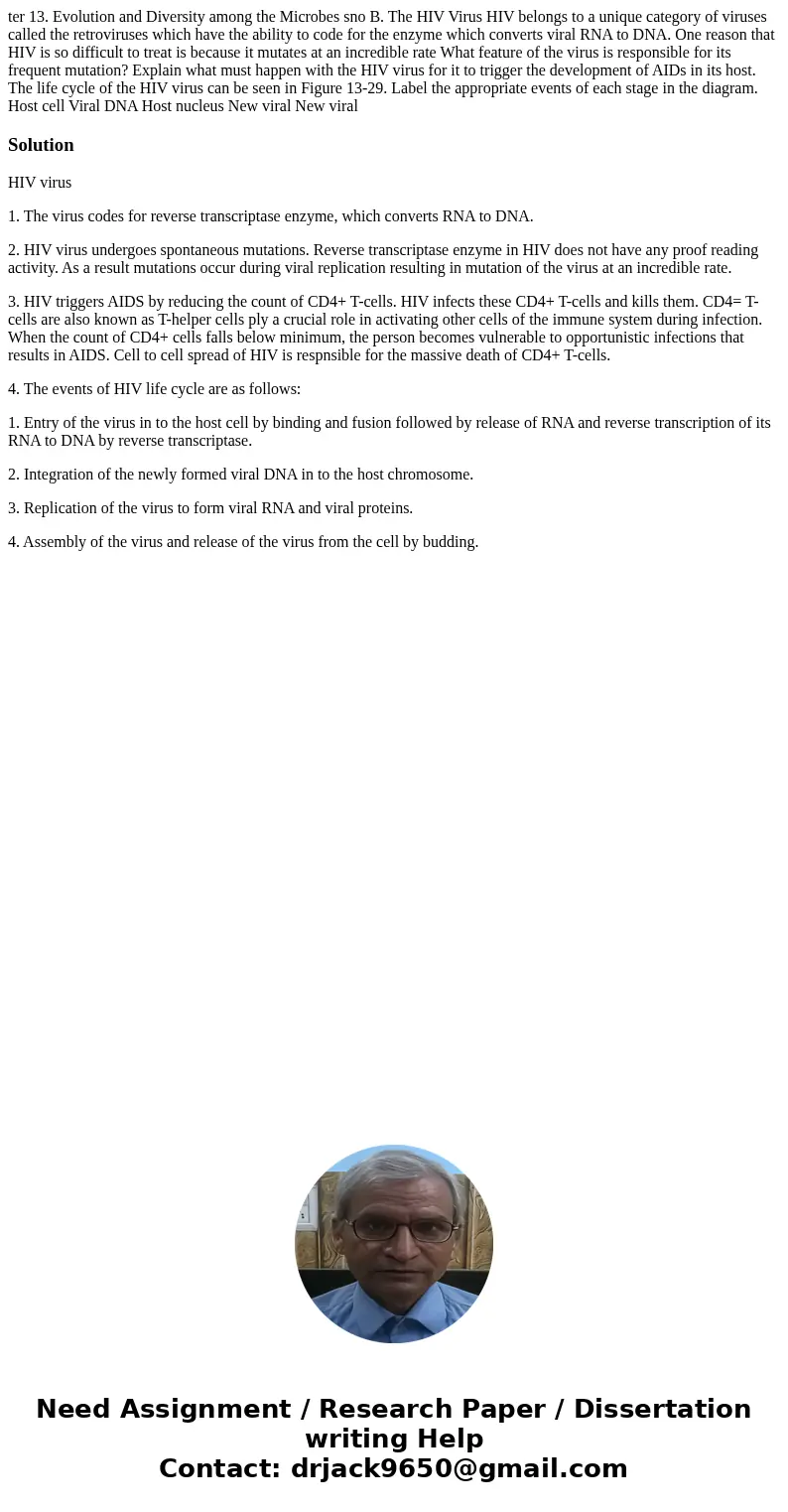ter 13 Evolution and Diversity among the Microbes sno B The
Solution
HIV virus
1. The virus codes for reverse transcriptase enzyme, which converts RNA to DNA.
2. HIV virus undergoes spontaneous mutations. Reverse transcriptase enzyme in HIV does not have any proof reading activity. As a result mutations occur during viral replication resulting in mutation of the virus at an incredible rate.
3. HIV triggers AIDS by reducing the count of CD4+ T-cells. HIV infects these CD4+ T-cells and kills them. CD4= T-cells are also known as T-helper cells ply a crucial role in activating other cells of the immune system during infection. When the count of CD4+ cells falls below minimum, the person becomes vulnerable to opportunistic infections that results in AIDS. Cell to cell spread of HIV is respnsible for the massive death of CD4+ T-cells.
4. The events of HIV life cycle are as follows:
1. Entry of the virus in to the host cell by binding and fusion followed by release of RNA and reverse transcription of its RNA to DNA by reverse transcriptase.
2. Integration of the newly formed viral DNA in to the host chromosome.
3. Replication of the virus to form viral RNA and viral proteins.
4. Assembly of the virus and release of the virus from the cell by budding.

 Homework Sourse
Homework Sourse